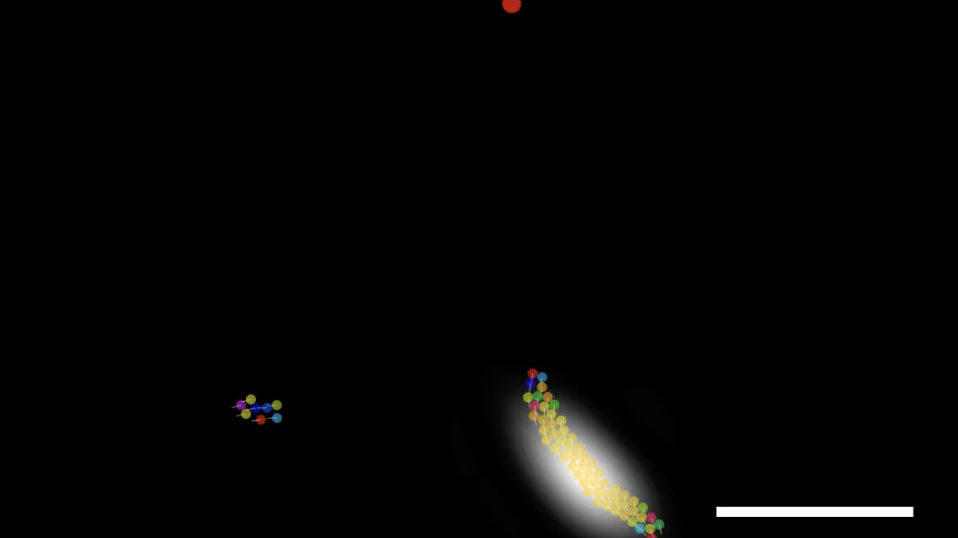We reach more than 65,000 registered users in Dec!! Register Now

Tiny robots use sound to self-organize into intelligent groups
- September 13, 2025
- 293 Views
- 0 Likes
- 0 Comment
Animals like bats, whales and insects have long used acoustic signals for communication and navigation. Now, an international team of scientists have taken a page from nature's playbook to model micro-sized robots that use sound waves to coordinate into large swarms that exhibit intelligent-like behavior. The robot groups could one day carry out complex tasks like exploring disaster zones, cleaning up pollution, or performing medical treatments from inside the body, according to team lead Igor Aronson, Huck Chair Professor of Biomedical Engineering, Chemistry, and Mathematics at Penn State.
Since the miniature, sound-broadcasting swarms of micromachines are self-organizing, they can navigate tight spaces and even re-form themselves if deformed. The swarms’ collective — or emergent — intelligence could one day be harnessed to carry out tasks like cleaning up pollution in contaminated environments, Aronson explained.
“This represents a significant leap toward creating smarter, more resilient and, ultimately, more useful microrobots with minimal complexity that could tackle some of our world's toughest problems,” he said. “The insights from this research are crucial for designing the next generation of microrobots, capable of performing complex tasks and responding to external cues in challenging environments.”
For the study, the team developed a computer model to track the movements of tiny robots, each equipped with an acoustic emitter and a detector. They found that acoustic communication allowed the individual robotic agents to work together seamlessly, adapting their shape and behavior to their environment, much like a school of fish or a flock of birds.
While the robots in the paper were computational agents within a theoretical — or agent-based — model, rather than physical devices that were manufactured, the simulations observed the emergence of collective intelligence that would likely appear in any experimental study with the same design, Aronson said.
“We never expected our models to show such a high level of cohesion and intelligence from such simple robots,” Aronson said. “These are very simple electronic circuits. Each robot can move along in some direction, has a motor, a tiny microphone, speaker and an oscillator. That’s it, but nonetheless it’s capable of collective intelligence. It synchronizes its own oscillator to the frequency of the swarm’s acoustic field and migrates toward the strongest signal.”
The discovery marks a new milestone for a budding field called active matter, the study of the collective behavior of self-propelled microscopic biological and synthetic agents, from swarms of bacteria or living cells to microrobots. It shows for the first time that sound waves can function as a means of controlling the micro-sized robots, Aronson explained. Up until now, active matter particles have been controlled predominantly through chemical signaling.
“Acoustic waves work much better for communication than chemical signaling,” Aronson said. “Sound waves propagate faster and farther almost without loss of energy — and the design is much simpler. The robots effectively ‘hear’ and ‘find’ each other, leading to collective self-organization. Each element is very simple. The collective intelligence and functionality arise from minimal ingredients and simple acoustic communication.”
List of Referenes
- Alexander Ziepke, Ivan Maryshev, Igor S. Aranson, Erwin Frey. Acoustic Signaling Enables Collective Perception and Control in Active Matter Systems. Physical Review X, 2025; 15 (3) DOI: 10.1103/m1hl-d18s
Cite This Article as
No tags found for this post









